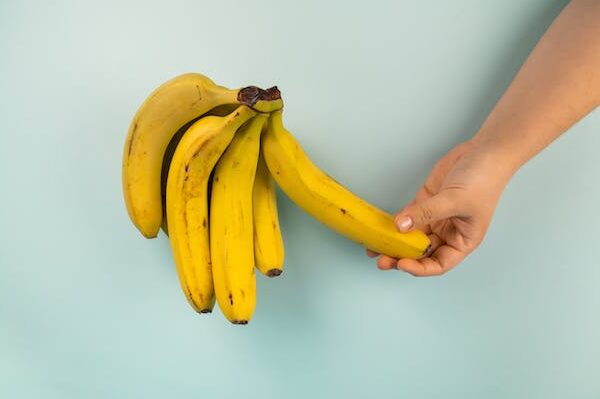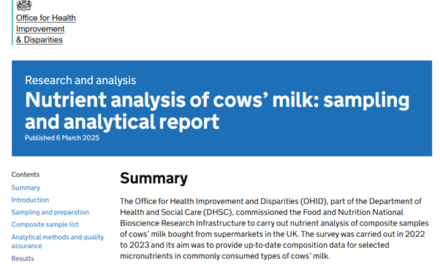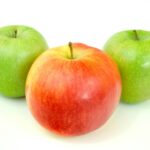The science of how fruit affect blood sugar
Tobi Adeyeye, a visiting nutritional science masters student in our food and nutrition expert team explores the science behind natural sugars, how different fruits affect blood sugar and how to enjoy fruit as part of a balanced, diabetes-friendly diet.
There can be confusion around sugar in the diet and how different forms of sugar, such as naturally occurring sugar in fruit, affect our health. Using our expertise in the Food and Nutrition National Bioscience Research Infrastructure (F&N NBRI) team we answer the question of whether natural sugars affect blood glucose the same way as added sugars.
How do natural sugars differ from added sugars?
Natural sugars are carbohydrates that occur naturally in foods like fruits, vegetables, and dairy products. Common natural sugars are fructose which is found in fruit and lactose which is found in dairy products.
In contrast, added sugars are sugars which are added to foods during processing, preparation or at the table with the aim of increasing food sweetness, improving texture, or flavour. These added sugars include table sugar, honey, corn syrup, malt sugar, dextrose, glucose, and brown sugar. Added sugars are mostly found in sugary drinks, energy drinks, pastry products, nectars and white bread.
Both natural and added sugars are broken down during digestion into simple sugars like glucose and fructose. These simple sugars are then absorbed into the bloodstream through the lining of the small intestine. Added sugars in food or drink products are absorbed into the blood stream quickly due to their simple structure and lack of fibre, leading to increases in blood sugar and insulin levels.
Naturally occurring sugars, especially those in whole foods like fruits, and vegetables are often accompanied by fibre which slows down the digestion process and the release of sugar into the bloodstream. They also come with vitamins and antioxidants which support overall health.
Sugar content and glycaemic impact of fruits
Fruits are a natural source of sugar, primarily in the form of fructose. The sugar content in fruits can vary significantly depending on the type of fruit. The glycaemic index (GI) and glycaemic load (GL) are important measures to consider.
Glycaemic index (GI) measures how quickly carbohydrates from food enter the bloodstream and raise the blood glucose level. It is expressed on a scale of 1 to 100. Many fruits have a low (55 or less) to medium (56-69) glycaemic index, but this can also vary.
Glycaemic load (GL) also measures how food impacts blood sugar levels. It takes it further by not only considering the rate of glucose conversion but also the amount of carbohydrates per serving, providing a more comprehensive picture of the food’s impact on blood sugar levels. Glycaemic load value ranges can be classified into:
- Low GL (0 – 10 )
- Moderate GL (11-19)
- High GL (20+)
A serving of watermelon has a GI of 75 but GL of 5.6 while a serving of dried dates has a GI of 40 and GL of 27.7. This shows that in general, low GL foods are more beneficial for individuals looking to keep their blood sugar levels in check.
Understanding the sugar content, glycaemic index and glycaemic load of different fruits can help in making informed dietary choices, especially when managing blood sugar levels. Individual responses to fruit consumption can vary significantly. Therefore, it is advisable to monitor blood glucose levels after consuming specific fruits to gain a better understanding of their impact on personal glycaemic response.
You can find the glycaemic index for fruits on the Glycaemic Index website. Plus, you can find the carbohydrate content of fruits through our Composition of Foods Integrated Dataset (CoFID).
Should you eat fruit if you are diabetic?
Diabetes is a condition characterised by high blood glucose levels. There are two main types of diabetes. In type 1 diabetes, the body cannot produce insulin. Whereas in type 2 diabetes, the body’s insulin is either ineffective or insufficient.
Fruit is often misunderstood when it comes to diabetes management. Many people wonder if individuals with diabetes should avoid all fruits due to their sugar content. While it is true that fruits contain sugar, they can still be part of a healthy diet for those with diabetes as they have great nutritional benefits, including:
- Soluble and insoluble fibre: fruits are loaded with fibre, which not only supports digestion but also slows down glucose absorption, helping to keep blood sugar levels stable.
- Vitamins and minerals: such as Vitamin C, potassium, and folate. They support bodily functions and the immune system, aiding in growth and development.
- Antioxidants and phytochemicals: they are bioactive compounds that help reduce inflammation and oxidative stress.
According to Diabetes UK, fruit and vegetables are associated with a lower risk of heart disease and certain cancers, and they can help manage blood pressure and cholesterol.
Is the sugar content different in fruit juice compare to whole fruit?
When it comes to choosing between fruit juice and whole fruit, it is easy to assume that fruit juice is equivalent to whole fruit, but this is not the case. Studies have shown that whole fruit is generally the healthier option. For instance, a study published in the British Medical Journal (BMJ) found that drinking a serving of fruit juice every day was associated with an increased risk of developing diabetes, whereas consuming whole fruits was linked to lower risk.
Blending and juicing fruits are distinct processes which have different nutritional impacts. Juicing extracts liquid, removing fibrous materials, resulting in a concentrated source of nutrients including sugar. Blending mechanically breaks down fruits, retaining some fibre and breaking cell walls, which helps the digestion of certain nutrients. Compared to juice, blended fruits provide higher satiety and slower nutrient absorption.
One study shows blended fruits do not significantly raise blood sugar levels compared to whole fruits, as seen in a study on mango glycaemic index. Adding protein, healthy fats, and fibre to blended juices can further delay blood sugar spikes. It is recommended by the NHS to limit fruit juice to 150ml per day, pairing it with meals to slow absorption of sugar.
How much sugar is in dried fruit?
Dried fruits are convenient and tasty but have concentrated sugars due to water removal, making them calorie-dense. 100g of dried apples contain about 60g of sugar, compared to 11g in fresh apples.
While dried fruits retain most vitamins, minerals and fibre, the drying process can reduce heat-sensitive nutrients like Vitamin C. Their smaller size can lead to overconsumption, increasing sugar and calorie intake, which is a concern for blood sugar management.
Despite this, dried fruits are rich in fibre, antioxidants and bioactive compounds, contributing to overall health. For example, dried apricots are high in potassium and iron. Choosing unsweetened varieties and controlling portions can help us incorporate dried fruits as part of a balanced diet.
How much fruit is too much?
While fruits are essential for a healthy diet, consuming too much can lead to excessive sugar, potentially causing blood glucose spikes . The Eatwell Guide suggests that fruits and vegetables should make up about 40% of our diet, with at least five portions a day. The UK government recommends that free sugars (which includes added sugars and sugar that is already in honey, sugar and fruit juice) should not exceed 5% of daily energy intake.
For people with diabetes, managing fruit intake is crucial. Choosing low GI fruits, controlling portions, and pairing fruits with protein and healthy fats can help manage blood sugar levels. Moderation and variety are key to consuming a wide range of nutrients and maintaining a balanced diet. And understanding natural sugars helps us make informed eating choices.
Our Food and Nutrition NBRI team contributes to research on healthy diets, food composition and sustainability through a range of initiatives, including the provision of comprehensive, evidence-based food composition data, including fruit. These open-access food resources are freely available to researchers, healthcare professionals, and the public.
- This blog was written by Tobi Adeyeye, a Masters student at the University of Calabria











